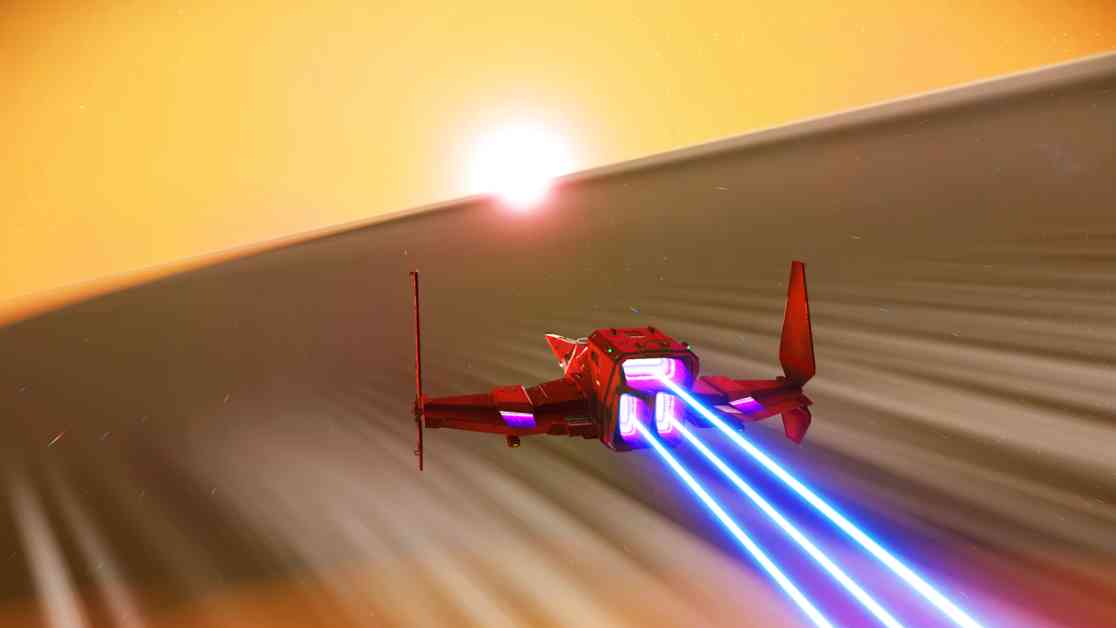Exploring the Fascination of Seamless Planetary Landings in Space Games
In the world of video games, the ability to seamlessly transition from outer space to a planet’s surface and back again has captured the imagination of gamers for years. While games are ultimately a form of illusion, developers have managed to create some truly impressive feats of simulation that allow players to experience the thrill of interstellar travel in a way that feels immersive and exciting.
The Illusion of Space Travel in Video Games
When it comes to depicting complex concepts like space travel, developers often rely on clever tricks and techniques to create a sense of realism without sacrificing gameplay. Take, for example, the take-off and landing animations in games like Star Wars Outlaws. While these sequences may appear seamless, they are essentially just cleverly disguised loading screens that help maintain the illusion of continuity.
However, despite the smoke and mirrors at play, there is something undeniably cool about being able to manually fly from outer space to a planet’s surface without any interruptions. The sense of freedom and adventure that comes with exploring the vast expanse of space is a key aspect of many space games, and seamless planetary landings play a crucial role in enhancing that experience.
The Debate Surrounding Seamless Planetary Landings
In recent years, there has been some debate within the gaming community about the importance of seamless planetary landings in space games. Developers like Bethesda and Ubisoft have opted not to include this feature in games like Starfield and Star Wars Outlaws, citing concerns about the amount of time and effort required to implement it.
According to Todd Howard, the director of Starfield, the decision not to include seamless planetary landings was based on the belief that it was not a crucial aspect of the gameplay experience. Similarly, Julian Gerighty, the game director of Star Wars Outlaws, expressed similar sentiments, stating that the effort required to implement free spaceflight would not have yielded significant benefits for players.
While these arguments have merit, there is still a strong case to be made for the inclusion of seamless planetary landings in certain types of space games. The ability to seamlessly transition between different environments adds a sense of immersion and realism that can greatly enhance the overall gaming experience.
A Closer Look at Space Exploration in Popular Games
When comparing games like Starfield, Star Wars Outlaws, and No Man’s Sky, it becomes clear that each game approaches space exploration in a unique way. While Starfield and Star Wars Outlaws focus more on narrative-driven gameplay, No Man’s Sky offers a more open-ended experience that allows players to freely explore and discover new worlds.
In the case of Starfield, the decision to forego seamless planetary landings in favor of fast travel and loading screens may have been a strategic choice to prioritize other aspects of the game. However, some players have expressed disappointment with the lack of exploration and freedom in the game, especially when compared to the ambitious scope of previous Bethesda titles like Skyrim.
On the other hand, games like No Man’s Sky have been praised for their seamless space travel mechanics and expansive open-world environments. Despite some technical limitations, the game’s ability to seamlessly transition between planetary surfaces and outer space remains a standout feature that continues to impress players years after its initial release.
The Technological Advancements in Modern Gaming
As technology continues to advance, developers are constantly pushing the boundaries of what is possible in video games. While features like ray tracing and advanced graphics capabilities are often touted as the future of gaming, it is the commitment to creating immersive and engaging experiences that truly sets games apart.
The seamless planetary landings found in games like No Man’s Sky represent a significant technical achievement that showcases the power of modern game engines. Despite the challenges of creating a seamless transition between different environments, developers have managed to create a sense of continuity and immersion that adds depth and realism to the gaming experience.
In conclusion, while seamless planetary landings may not be a priority for every space game, they remain an important aspect of creating a truly immersive and engaging gameplay experience. As technology continues to evolve, we can expect to see even more impressive feats of simulation that push the boundaries of what is possible in the world of video games.
















